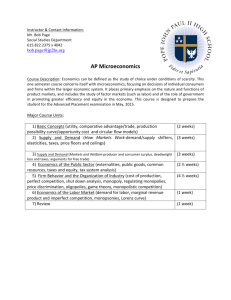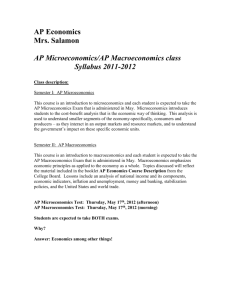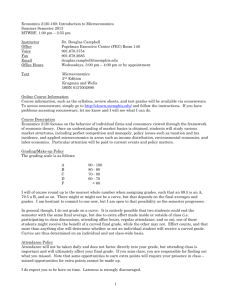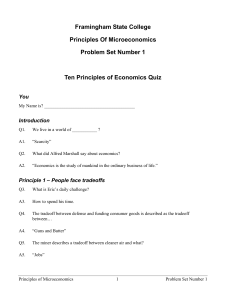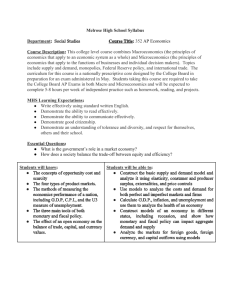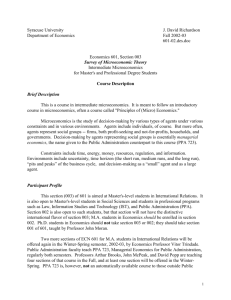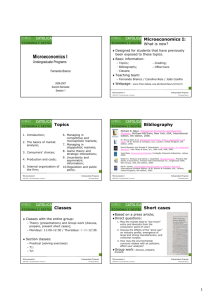AP Microeconomics Student Information Sheet
advertisement
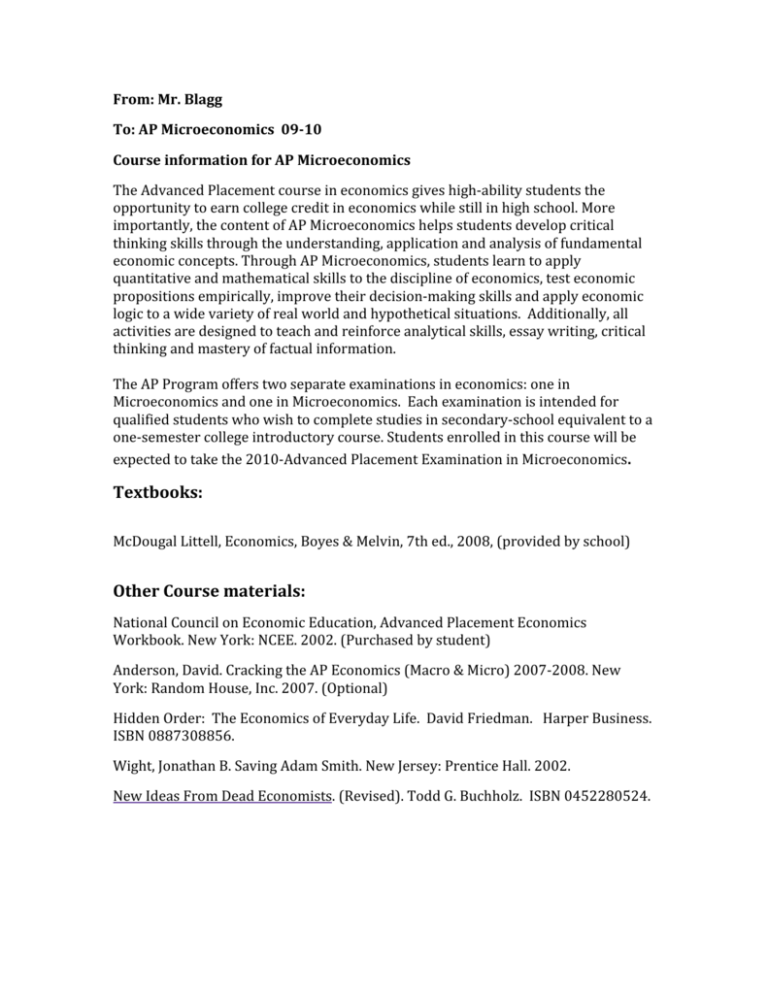
From: Mr. Blagg To: AP Microeconomics 09­10 Course information for AP Microeconomics The Advanced Placement course in economics gives high‐ability students the opportunity to earn college credit in economics while still in high school. More importantly, the content of AP Microeconomics helps students develop critical thinking skills through the understanding, application and analysis of fundamental economic concepts. Through AP Microeconomics, students learn to apply quantitative and mathematical skills to the discipline of economics, test economic propositions empirically, improve their decision‐making skills and apply economic logic to a wide variety of real world and hypothetical situations. Additionally, all activities are designed to teach and reinforce analytical skills, essay writing, critical thinking and mastery of factual information. The AP Program offers two separate examinations in economics: one in Microeconomics and one in Microeconomics. Each examination is intended for qualified students who wish to complete studies in secondary‐school equivalent to a one‐semester college introductory course. Students enrolled in this course will be expected to take the 2010‐Advanced Placement Examination in Microeconomics. Textbooks: McDougal Littell, Economics, Boyes & Melvin, 7th ed., 2008, (provided by school) Other Course materials: National Council on Economic Education, Advanced Placement Economics Workbook. New York: NCEE. 2002. (Purchased by student) Anderson, David. Cracking the AP Economics (Macro & Micro) 2007‐2008. New York: Random House, Inc. 2007. (Optional) Hidden Order: The Economics of Everyday Life. David Friedman. Harper Business. ISBN 0887308856. Wight, Jonathan B. Saving Adam Smith. New Jersey: Prentice Hall. 2002. New Ideas From Dead Economists. (Revised). Todd G. Buchholz. ISBN 0452280524. Suggested WEB Sites: www.theoildrum.com, welkerswikinomics.wetpaint.com reffonomics.com/GRAPHS.html hadm.sph.sc.edu/courses/econ/Tutorials.html www.economy.com/dismal/ Structure: Each week there will be a lecture/discussion format, a quiz, graph practice and current economic issue application discussion. Text and AP Exam review material will be completed and checked, weekly. External readings will be quizzed periodically though out the semester. There will be two Unit Tests valued at 100 points each, during a nine week grading period. There will be a mid‐term valued at 300 points for the first nine week period as well as a final valued 300 points at the end of the semester. Throughout the semester there will be a variety of assessments and assignments, which include several of the outside readings, group assignments, objective presentation by students, and Internet assignments. The first four chapters of “New Ideas from Dead Economists” will be assigned for summer reading. The students will take notes and will be required to write an essay in the first week about Smith, Ricardo, and Malthus. They will also read “Saving Adam Smith” and compile main idea/pertinent questions they would like to discuss for each chapter (placed on note‐cards). They will also be required to visit each of the suggested web site at least three times during the summer and print out proof of their visit. They must also write at least a page describing what the found on the sight and what the learned that was new. This will be their first notebook check. _______________________________________________________________________________________________ Parent Signature__________________________________________ Date: ________________________ Student Signiture__________________________________________Date:________________________ ________________________________________________________________________________________________

